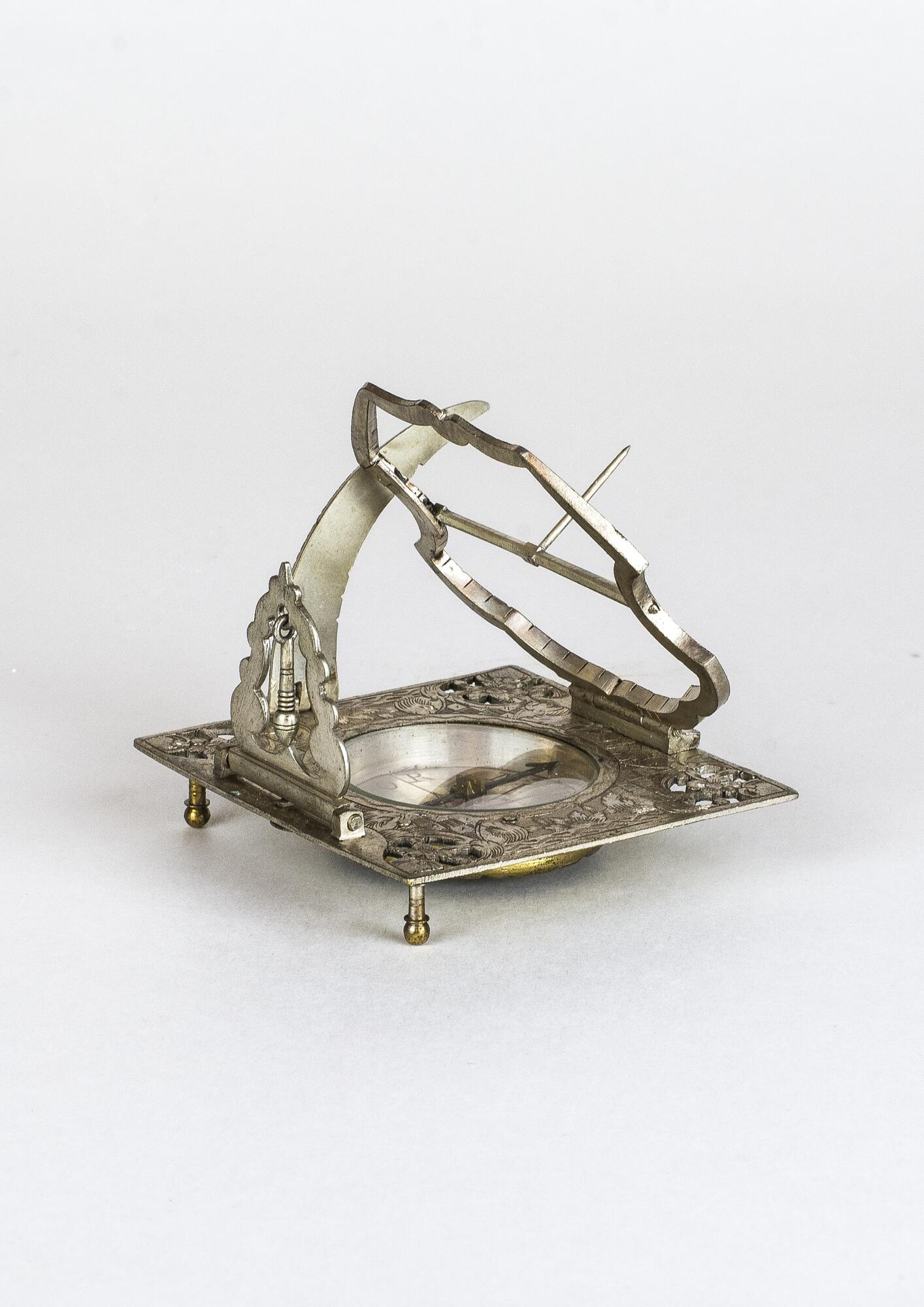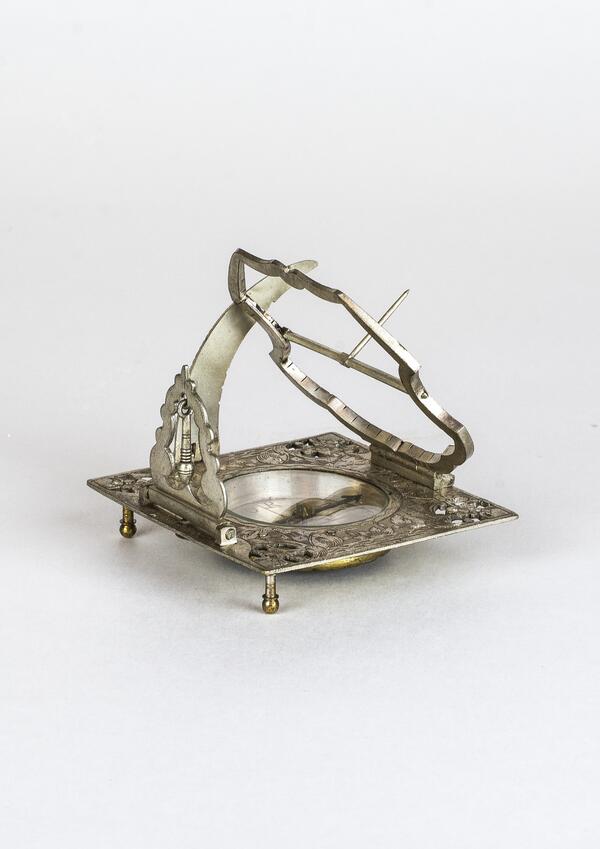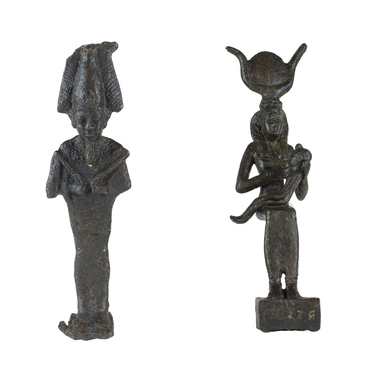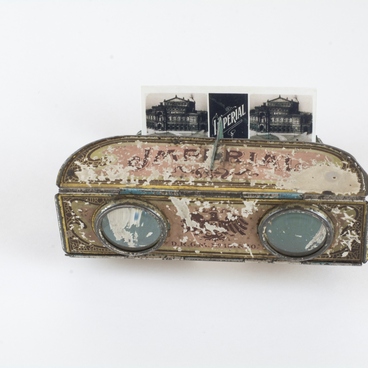The museum houses a universal equatorial sundial. They came into the collection from the citizen Sergey Emelyanov in the 1930s. The sundial was given to him by his father Vladimir Yemelyanov, city mayor and head of the Murom fire department, and he received it from his grandfather.
The sundial is made of metal and decorated with engravings. It consists of a horizontal surface with a compass, a latitude scale and a pendulum bob — a dangling weight for determining the exact vertical position — as well as a dial and a shadowing needle.
The plane with the hour divisions is called a cadran. On top, perpendicular to it, there is a gnomon, a rotating core. By the shortest shadow that it casts on the clock, one can determine the solar altitude angle.
These sundials are called equatorial because their cadran must be set parallel to the plane of the equator. Then the gnomon, which is aligned with the East-West line, will be parallel to the Earth’s axis and point to the North Pole of the world.
A tuned sundial cannot go wrong. To use it, however, you need knowledge of astronomy, geography, trigonometry, and history.
Such clocks show not the conventional civil time accepted in our days, but the true solar time — that is, the one which reflects the irregular motion of the Sun across the sky. The Earth’s orbit is elliptical, so the rate at which the Earth moves along it varies throughout the year. When the Earth is at perihelion (the point closest to the Sun) time is accelerated. At aphelion (the farthest point from the Sun) time slows down. Therefore, mechanical clocks, which run evenly, from time to time can be ahead of the solar clock and then behind it. And because of the tilt of the Earth’s axis in summer, the Sun rises much higher in the sky, and therefore the daylight hours are longer than in winter.
True time was kept while mechanical clocks were showing time with great inaccuracies. By the end of the 18th century the design of mechanical clocks was improved, and European countries switched to conventional time — the average solar time.
Equatorial sundials show the time only from the spring equinox to the autumn equinox — from March 20 to September 23. On the equinoxes, the clocks do not work: the sun is exactly at the celestial equator, and the gnomon does not cast shadows. And from September to March, the sun does not illuminate the cadran.
In order to ensure that the sundial in the museum collection could be used all year round, they were equipped with a rotary gnomon, and the back side of the cadran was marked with dashes. The experts’ theory about the year-round use of this watch is confirmed by the presence of the topenant — the part of the mechanism that fixes the rotary scale with the gnomon in the right position.
The sundial is made of metal and decorated with engravings. It consists of a horizontal surface with a compass, a latitude scale and a pendulum bob — a dangling weight for determining the exact vertical position — as well as a dial and a shadowing needle.
The plane with the hour divisions is called a cadran. On top, perpendicular to it, there is a gnomon, a rotating core. By the shortest shadow that it casts on the clock, one can determine the solar altitude angle.
These sundials are called equatorial because their cadran must be set parallel to the plane of the equator. Then the gnomon, which is aligned with the East-West line, will be parallel to the Earth’s axis and point to the North Pole of the world.
A tuned sundial cannot go wrong. To use it, however, you need knowledge of astronomy, geography, trigonometry, and history.
Such clocks show not the conventional civil time accepted in our days, but the true solar time — that is, the one which reflects the irregular motion of the Sun across the sky. The Earth’s orbit is elliptical, so the rate at which the Earth moves along it varies throughout the year. When the Earth is at perihelion (the point closest to the Sun) time is accelerated. At aphelion (the farthest point from the Sun) time slows down. Therefore, mechanical clocks, which run evenly, from time to time can be ahead of the solar clock and then behind it. And because of the tilt of the Earth’s axis in summer, the Sun rises much higher in the sky, and therefore the daylight hours are longer than in winter.
True time was kept while mechanical clocks were showing time with great inaccuracies. By the end of the 18th century the design of mechanical clocks was improved, and European countries switched to conventional time — the average solar time.
Equatorial sundials show the time only from the spring equinox to the autumn equinox — from March 20 to September 23. On the equinoxes, the clocks do not work: the sun is exactly at the celestial equator, and the gnomon does not cast shadows. And from September to March, the sun does not illuminate the cadran.
In order to ensure that the sundial in the museum collection could be used all year round, they were equipped with a rotary gnomon, and the back side of the cadran was marked with dashes. The experts’ theory about the year-round use of this watch is confirmed by the presence of the topenant — the part of the mechanism that fixes the rotary scale with the gnomon in the right position.



